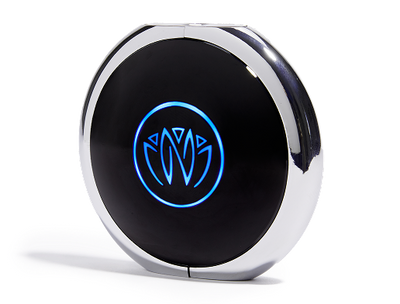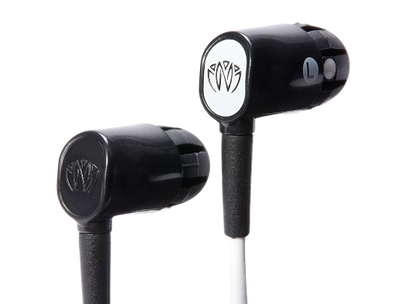The word itself might sound complicated and scientific, but the basic function of neurostimulation is rather straightforward: stimulating the nervous system. Of course, our nervous systems are triggered by a number of things all day long (consciously or unconsciously) but there are a number of benefits to being able to control these responses in some way.
Types of neurostimulation
There are a few different types of neurostimulation we're going to discuss today, with some being more invasive than others.
For example, more invasive forms of neurostimulation involve surgically implanting a neurostimulator under the skin. Others, like Xen by Neuvana, are non-invasive and easily accessible.
Let's break down the different types of neurostimulation and what they might be used for.
Neurostimulation for chronic back pain
Spine surgery teams use neurostimulation on some patients with chronic and long-term back pain that impacts their quality of life. A small device (the neurostimulator) will be placed under the skin, typically in the buttocks.
Once implanted, the neurostimulator sends electrical impulses to the brain. Ideally, these impulses reach the brain before the pain signals from your back do.
As for what to expect, this depends on the specific device you get, who performs the procedure, and other factors.
Depending on the specific neurostimulator or purpose of your treatment, you may have a minimally invasive procedure with a small incision to have the neurostimulator placed. In some cases, the procedure is slightly more invasive, involving an epidural and two separate incisions.
Neurostimulation for seizures
Neurostimulation is also used to treat seizures at their source, particularly for those who do not respond to medication. In this case, a form of responsive neurostimulation (known as RNS® Therapy) may be used.
This incredibly innovative technology works in three different ways:
- Constant monitoring of brain activity at the seizure focus
- Detecting unusual focus (that may indicate seizure activity)
- Responding within milliseconds to seizure activity, in some cases stopping it before it turns into a seizure
RNS® Therapy involves placing the device or stimulator in the skull, with tiny wires placed on one or two places on top of the brain where seizure activity may begin (this is determined with extensive testing). These wires connect to the stimulator, and once they're placed, they won't be seen. Not to mention, the device is painless and doesn't cause any unusual sensations for the wearer.
Neurostimulation for less stress, better sleep, and improved well-being
Now, what about those who do NOT have chronic pain, seizures, or other conditions that might require a more invasive form of neurostimulation? Is there a way for them to benefit from this concept? And without surgery or incisions? As it turns out, there is. And it's called vagus nerve stimulation (VNS).
But VNS wasn't always as minimally invasive as it can be today. Like other forms of neurostimulation, it can be done by implanting a device under the skin, typically in the neck. However, there are also ways to enjoy the benefits of neurostimulation without surgery.
With revolutionary products like Xen by Neuvana headphones, the vagus nerve can be stimulated simply by wearing a pair of special headphones plugged into your Xen by Neuvana device! (More on those in a minute)
What to expect with vagus nerve stimulation
We know improved focus and calm already sound pretty good. But what about the other benefits of vagus nerve stimulation? What can you expect from it? Is this type of neurostimulation right for you? Keep reading to find out!
First, let's do a quick recap of the vagus nerve in case you've missed our other blog posts or you're new to the vagus nerve.
What is the vagus nerve?
We go into a lot more detail about the vagus nerve in this post. But to cover it in the simplest terms, it's a critical component of the parasympathetic nervous system. This part of the nervous system is responsible for a number of bodily functions, including mood, digestion, heart rate, and immune response.
Unlike the "fight or flight" response from the sympathetic nervous system, the parasympathetic nervous system is responsible for what we know as "rest and digest." These are all the signs your body needs to tell it it's okay to slow down, the threat has passed, that you're safe.
These systems can kick in naturally when they need to. But if your sympathetic nervous system is always in overdrive, you're always in a state of fight or flight. Over time, this can mean more stress, less sleep, lower mood, and a number of other negative effects.
So, what happens if your parasympathetic nervous isn't kicking in when you want it to? Or you know you could benefit from that rest and digest response more often? One option is–you guessed it–vagus nerve stimulation! You can stimulate this nerve, and as a result, this response, to enjoy the effects of it.
The benefits of vagus nerve stimulation
There are many benefits of vagus nerve stimulation. Once the vagus nerve is stimulated, there are a number of benefits you could experience. We already mentioned how it can benefit those with seizures and pain. But those just looking to feel better on a daily basis can also reap its rewards.
Here are some of the ways non-invasive VNS can help you get after your goals and prioritize what you love:
- Less stress
- Better sleep
- More tranquility
- Brighter mood
- Enhanced focus
What to expect
Chances are, you regularly wear headphones to listen to music, podcasts, shows, or during phone conversations. But did you know there are special headphones you can wear to stimulate your vagus nerve? This type of non-invasive VNS is taking the world by storm, and it's no surprise.
Xen by Neuvana is a patented electronic device that delivers gentle micropulses through the headphones directly to the vagus nerve located in your ear...no surgery or incisions required. It pairs wirelessly to your Neuvana app where you can customize your sessions with your favorite sounds or music.
The result? Improved focus and calm (and all those other benefits we just listed) anywhere you are! On the train to work, reading a book, listening to music, doing housework. Virtually wherever you are and whatever you're doing, VNS can be at your fingertips.
During a VNS session with your Xen by Neuvana headphones, you might experience a mild tingling and warmth in your left ear. Beyond that, like most of our customers do, what you can expect is to feel relaxed, calmer, and more tranquil. It's like listening to your music how you usually do, but all while enjoying the benefits of VNS at the same time.
Try it for yourself
We know the concept of neurostimulation can seem overwhelming, but the application doesn't have to be! You can stimulate your parasympathetic nervous system with vagus nerve stimulating headphones from Xen...all from the comfort of your own home. No pain and no surgery required! Ready to shop Xen by Neuvana? Click here.
Or, if you're interested to learn more about vagus nerve stimulation and the vagus nerve itself, here are three posts to read next:
- 2 Ways Music Can Affect the Vagus Nerve and Its Benefits in FL
- How to Stimulate Your Parasympathetic Nervous System
- How To Hack Your Own Vagus Nerve






